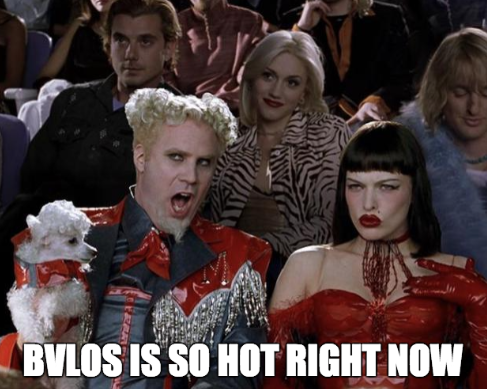A visitor put up by Kittyhawk Co-founder Josh Ziering.
This is the second FAA UAS Symposium I’ve attended and the distinction between the two has been so dissimilar that it appears like I may have a waiver.
This yr the symposium drew nearly double the variety of attendees with effectively over 1000 individuals there. It wasn’t simply coverage wonks both. There was a really wholesome smattering of impartial industrial operators, the regular trade faces, and the most FAA people I’ve ever seen at one occasion. It made for a really refreshing combine of individuals and result in some very fascinating conversations.
Writing History in Real Time
Regardless of your emotions about the FAA Acting Administrator, one should admit that he has a particularly difficult job. His administration is the figurehead for all the things from the way forward for supersonic flight to paraglider coverage to drone commercialization. Understanding the nuances of all these completely different types of aviation is a problem unto itself, intelligently pioneering the manner ahead on them is one other stage of complexity totally. You can learn Elwell’s opening tackle, “Writing History in Real Time” right here.
Remote ID
A recurring subject at the occasion was the implementation and requirement of Remote ID. The final yr has seen numerous focus on this subject. The Remote ID Advisory and Rulemaking Committee has been described as a difficult atmosphere. Dee Ann Divis of Inside Unmanned Systems described it as “splintered.” From the rumors that I’ve heard, this can be a very diplomatic description.
The overwhelming sentiment I garnered from the FAA is that Remote ID goes to be the linchpin that permits the remainder of the UTM options we’re wanting ahead to. Flights over individuals? BVLOS? Night time ops? They all rely on with the ability to determine plane and their house owners.
The market is taking steps to mitigate unknown operators. Airspace Systems, simply raised $20MM for his or her drone looking drone. If you wish to see it in motion, you may watch this very heroic video.
Elwell got here proper out and stated two necessary issues of be aware: “The FAA is moving very quickly to create Remote ID requirements.” In reality, there was a timeline being bandied about that included the yr 2018 which in itself is thrilling information. It’s been 1.5 years since half 107 was launched and seeing the subsequent section take form could be very promising.
The different juicy assertion that Elwell made was about the mannequin plane exemption. Part 101, part 336 is what permits mannequin plane hobbyists to function with out oversight of the FAA. They merely have to be part of a nationwide group primarily based group comparable to the AMA.
However, this ‘carve out’ is inflicting all types of issues since lots of people really feel they don’t have to observe that security code. This results in them being labeled as ‘non-compliant Part 107’ operators and it goes down the rabbit gap from there. I believe that folks hiding behind 336 is impeding industrial drone progress and I think I’m not the just one.
 BVLOS
BVLOS
By far the hottest classes had been about BVLOS and find out how to get that waiver. As a extremely jaded drone particular person, I truly discovered myself feeling one thing unfamiliar — shock.
The very first thing that shocked me was how prepared the FAA was to, at the very least, take heed to new waiver purposes. If you set forth a stable effort on explaining why and the way you’ll give you the chance mitigate the dangers of a BVLOS operation, you’ll get at the very least two individuals reviewing your utility. If you’ve carried out a radical job filling it out however are lacking some essential info, they’ll even offer you a request for extra info.
The different factor that shocked me was how few individuals had been capable of persuade the FAA that they’d be capable of mitigate these dangers. To date, the FAA has solely issued about 20 waiver for BVLOS. If you seek for 107.31 (The visible line of sight requirement) You’ll see 16 entries on the FAA database: https://www.faa.gov/uas/request_waiver/waivers_granted/
One BVLOS waiver, granted to FLIR, was for a 34 gram plane about the measurement of your hand. The mechanics of the human eye necessitated they get a BVLOS waiver they usually had been granted one. I believe this was largely an train in advertising because it’s beneath 255 grams and doesn’t require registration, a BVLOS waiver appears just a little overkill however kudos to them for enjoying the sport.
One different notable waiver was to BNSF for observe inspection. They’re utilizing numerous heavy-duty hardware from the likes of Rockwell Collins. This kind of hardware is extra typically seen in the fight theatre than in the heartland of the US.
While expounding upon the BVLOS waivers, the FAA famous that BNSF is definitely one among the smaller entities that obtained a waiver for BVLOS. If you thought that your tiny two-person present was going to cruise via the waiver utility course of, you must most likely assume once more.
Takeaways
Elwell says, “The FAA is open for business” and I’m inclined to consider him. The present administration has made it very clear that they want to fast-track America’s drone innovation. You can see proof of this in applications like the UAS IPP, the nationwide beta roll out of LAANC, and the addition of recent USS suppliers like Kittyhawk.
Overall, I’m impressed. 2018 goes to be a fantastic yr for the FAA and the industrial drone trade if they will sustain this tempo.
 Joshua is the Co-Founder and Chief Pilot of venture-backed Kittyhawk, a founding member of the FAA Unmanned Aviation Safety Team, and an FAA Part 107 certificates holder. As an achieved drone pilot, Josh has professionally flown all method of unmanned plane for the NHL, ABC Television and numerous manned-aviation airshows for over 15 years.
Joshua is the Co-Founder and Chief Pilot of venture-backed Kittyhawk, a founding member of the FAA Unmanned Aviation Safety Team, and an FAA Part 107 certificates holder. As an achieved drone pilot, Josh has professionally flown all method of unmanned plane for the NHL, ABC Television and numerous manned-aviation airshows for over 15 years.
Josh recurrently writes about drone associated matters and eagerly shares his love of aviation and often-polarizing opinions on the place it’s headed at trade convention shows and panel discussions. Joshua holds a bachelor’s diploma in poetry from Arizona State University.
 Unmanned Aerial Vehicle The latest drone news
Unmanned Aerial Vehicle The latest drone news




